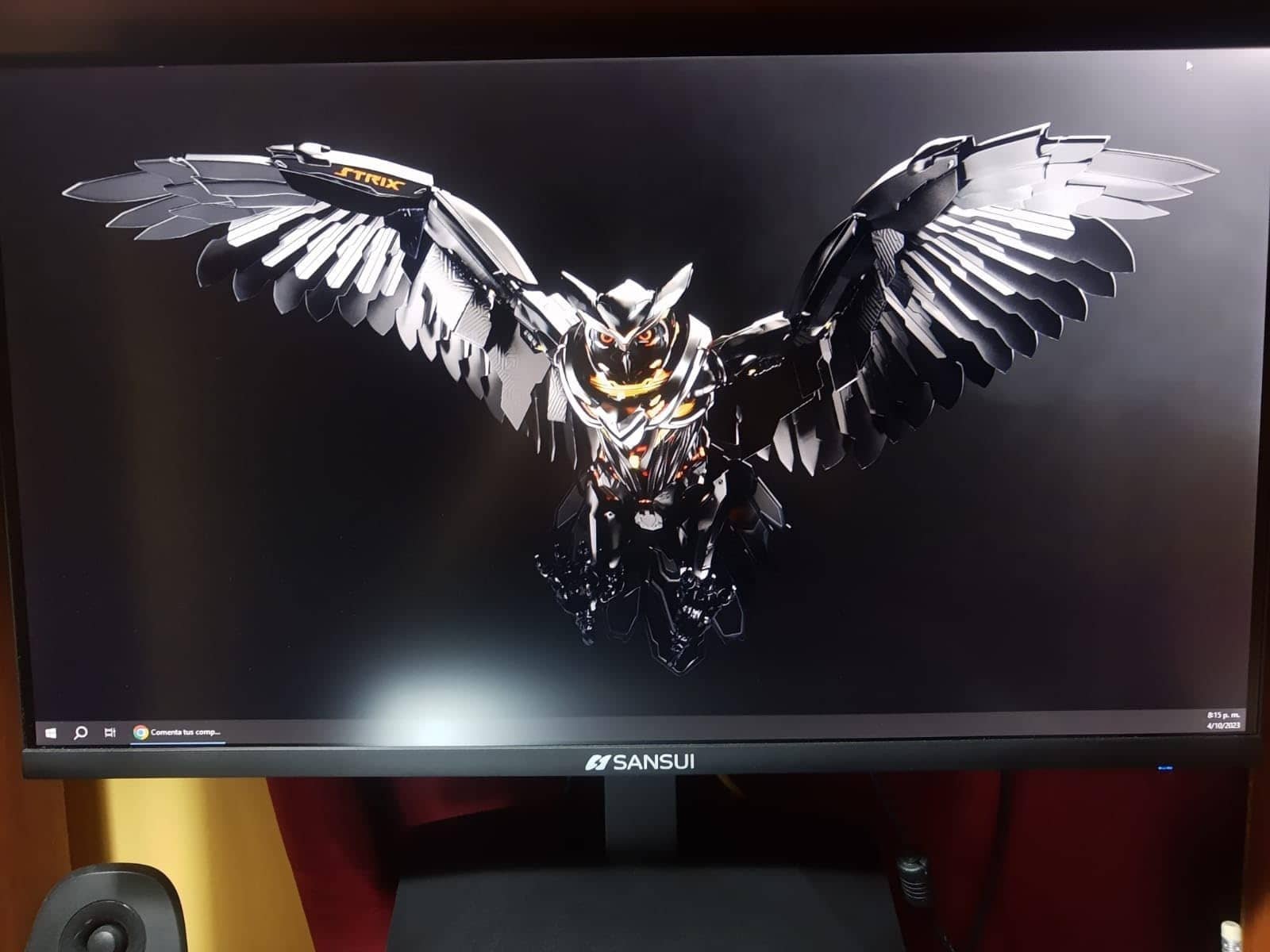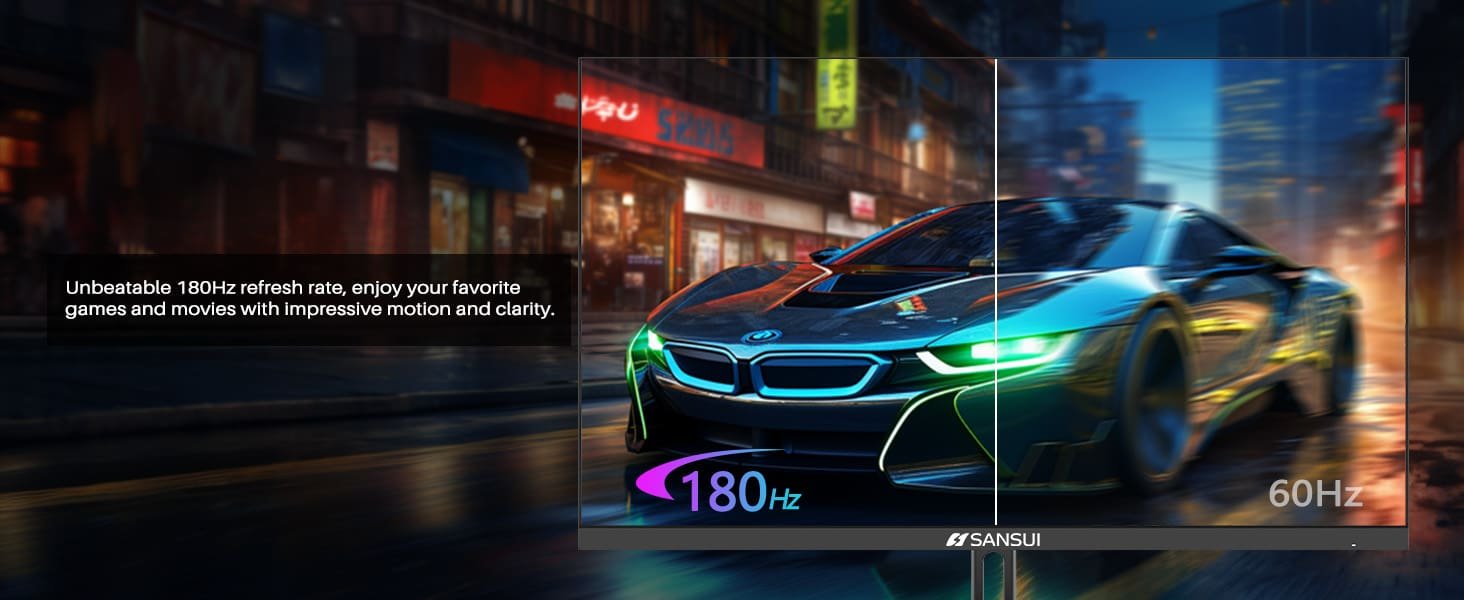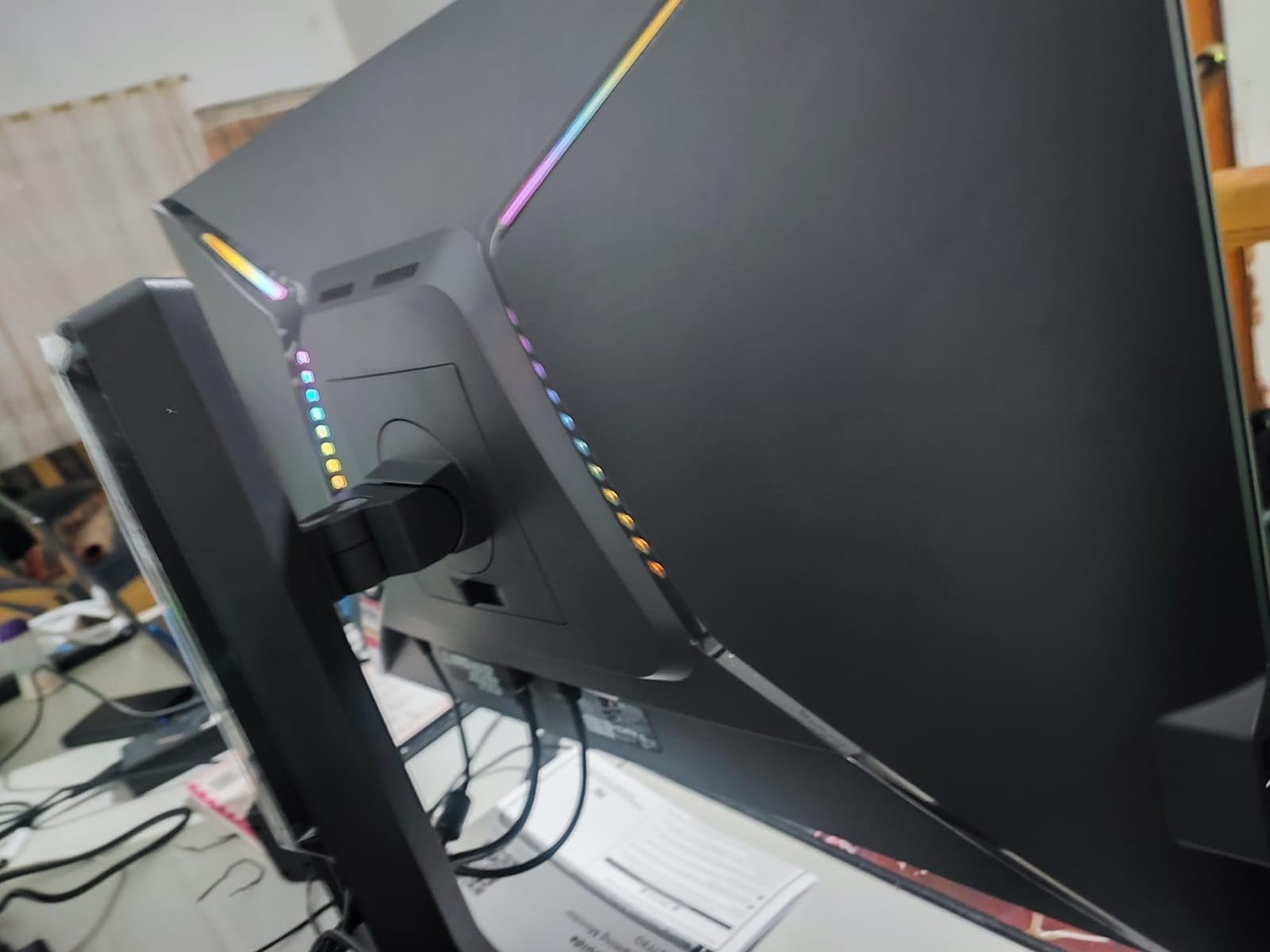So, you’ve been looking into monitors and stumbled across the name SANSUI. Maybe you remember the brand from speakers or audio gear, and now you’re asking yourself: “Is SANSUI trusted for monitors or not?” No worries—let’s walk through it like we’re having coffee.
By the end, you’ll know:
- What makes SANSUI monitors stand out
- How they perform for gaming and office work
- How they compare to other budget picks
- Whether they’re worth your hard-earned money
The SANSUI Story From Audio to Displays
First thing: SANSUI isn’t new to tech. They’re best known from back in the day for speakers, radios, and amps. Lately, though, they’ve launched over 20 different monitors—a pretty bold move, but one that seems thoughtfully done.

Their lineup ranges from standard 22-inch screens to 34-inch curved ultrawides. If you’re picking a monitor for productivity, casual streaming, or gaming, they’ve probably got an option for you.
One popular model is the ES-G34C5—a 34-inch QHD curved ultrawide with a 165Hz refresh rate, 1ms response time, and 120% sRGB coverage, all under about $300. That’s rare at this price.
Why SANSUI Wins on Price
Let’s face it: unless you’re rolling in cash, a $600 monitor is a serious purchase. That’s where SANSUI grabs attention. Their monitors typically cost 10–20% less than direct competitors with the same specs.
- The ES-22F1, a basic Full HD model, starts around $100.
- The ES-G27F2Q gives you QHD resolution, 180Hz refresh rate, and HDR—all for under $200.
That kind of value is hard to ignore.
Specs That Gamers Will Notice
Gamers, take note. SANSUI clearly wants your attention, and they’ve built monitors with features gamers appreciate:
Top-tier refresh rates and speed
They push specs like:
- 144Hz
- 165Hz
- 180Hz
- Even 240Hz
Response times sit at 1ms—which is excellent for movie viewers and FPS gamers alike.
Adaptive Sync support
Most gaming models include either FreeSync or Adaptive Sync. That means fewer screen tears and smoother gameplay, even with mid-range GPUs.
HDR10 and good color
Top models like the ESA-G27F6Q-PRO offer:
- WQHD resolution (2560×1440)
- 240Hz refresh rate
- HDR10 with 10-bit color depth
That’s a powerful setup for competitive or immersive gaming—and worth every penny.
Not Just for Gamers, Office & Everyday Use
If you’re a student, worker, or just need a second screen, SANSUI has options that work well in normal light. Many models come with IPS panels for better color and wider viewing angles.

The ES-27X3 (“plug-and-play” friendly) is great for office tasks—it includes USB-C, built-in speakers, and solid color accuracy. Place it next to a laptop and you’re all set. Just one cable, no mess.
They’ve also added useful features:
- Low blue light modes
- Flicker-free tech
- Support for VESA arms/mounts
- Basic built-in speakers
These are little quality-of-life improvements that show SANSUI cares about the day-to-day user experience.
Build Quality
No sugarcoating here—these monitors don’t feel premium. Plastic chassis, minimal press-fit stands, limited adjustability (tilt only in many cases). If you’re after luxury styling, metal finishes, or swiveling mounts, these screens aren’t top-tier.

But here’s the thing: they’re built solid enough. No creaks, no cheap wobble. And since many models support VESA mounts, it’s easy to tailor your setup with a better stand or arm—especially for your office.
Color Performance
SANSUI offers both IPS and VA panels. IPS is known for honest color and wide viewing angles. VA panels deliver deeper contrast, ideal for movies.
Their monitors often hit 120% sRGB, which is good for photo editing and design work—definitely better than most budget-level screens. HDR also helps boost brightness and pop when needed.
For serious photographers or professional-level colorists, these are “good enough,” but not pro-grade. For everywhere else—streamed media, content creation, gaming—they’re more than sufficient.
Real-World Feedback
Looking online, most comments about SANSUI monitors are positive.
Some highlights:
- “Picked up the ES-27X3 for remote work – perfect color and easy MacBook setup.”
- “180Hz QHD gaming with my Series X feels smooth and visually rich.”
- “Good surprise: bigger display, nicer colors than my laptop screen. Solid value.”
Minor setbacks:
- A couple mentions of mild panel bleeding or limited tilt
- Stand stability isn’t high-end—but mount support exists
Overall, though, people are pleased with the price-performance balance.
How SANSUI Compares to Other Budget Picks
It’s smart to compare monitor brands when shopping. Here’s how SANSUI stacks against others:
| Stack Against | SANSUI Strengths | Where Others May Be Better |
|---|---|---|
| AOC / ViewSonic / Pixio | Better combos of refresh, resolution, HDR at same price | More premium stands, hub features, wider dock support |
| KTC / Sceptre | Higher specs per dollar | Occasional better color calibration or design polish |
| BIG-TICKET BRANDS | Price VS performance balance | More warranties, tougher build quality, pro-grade options |
Essentially, if you want value-first monitors that still perform, SANSUI does a very strong job.
Final Thoughts
Here’s the TL;DR:
- Gamers: Smooth gameplay, sharp resolutions, features like HDR10 and Adaptive Sync—especially appealing for budget builds or next-gen consoles.
- Remote workers / students: Good display, USB-C convenience, sleek designs that don’t break the wallet.
- Bigger screen seekers: Ultrawides, curved displays, and decent specs without premium pricing.
What you trade off:
- Stand adjustability (height, swivel)
- Premium materials or finishes
- Optional extras like USB hubs, full G-Sync capability
But if you don’t need those bells and whistles, SANSUI gives serious value.